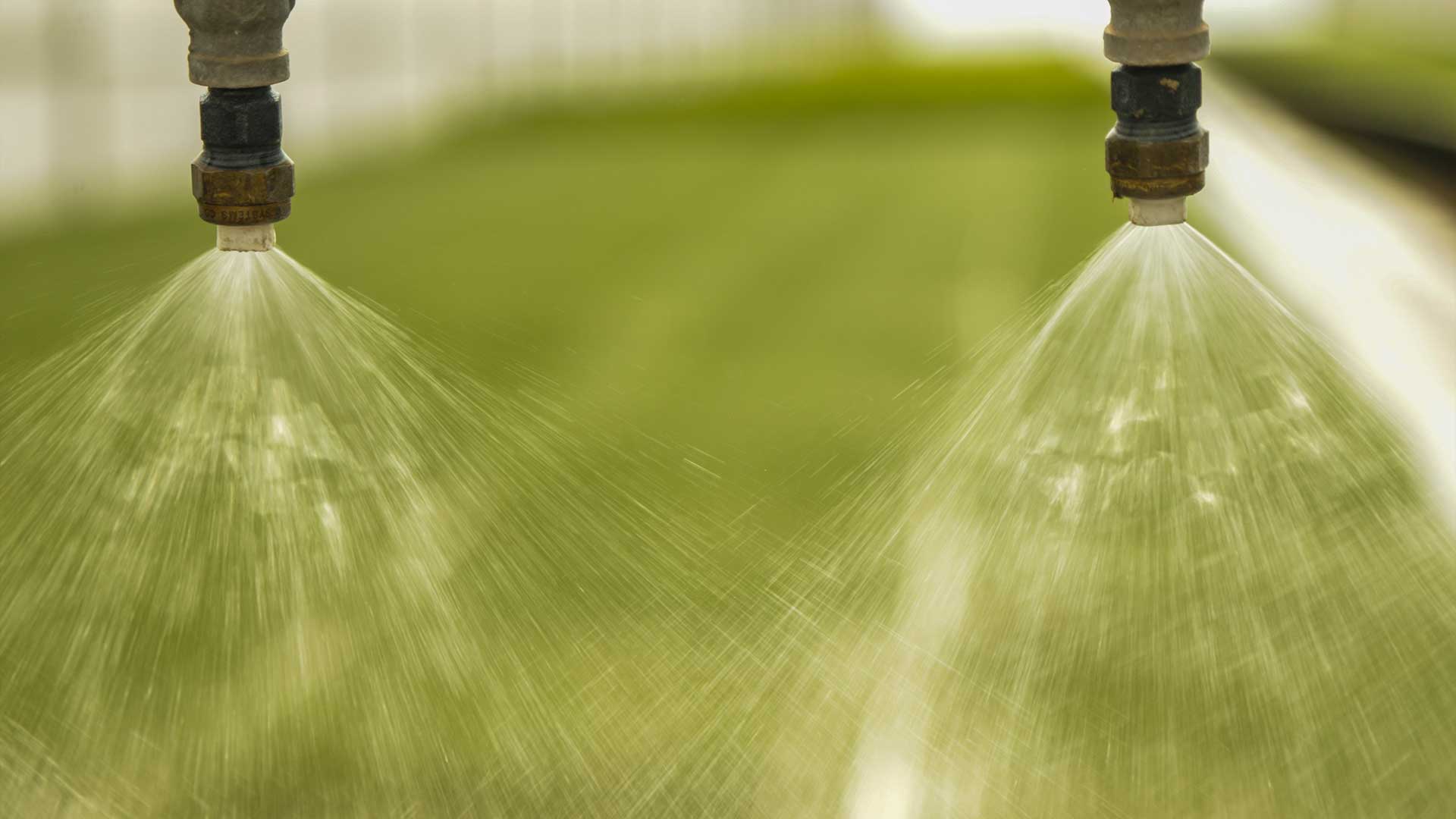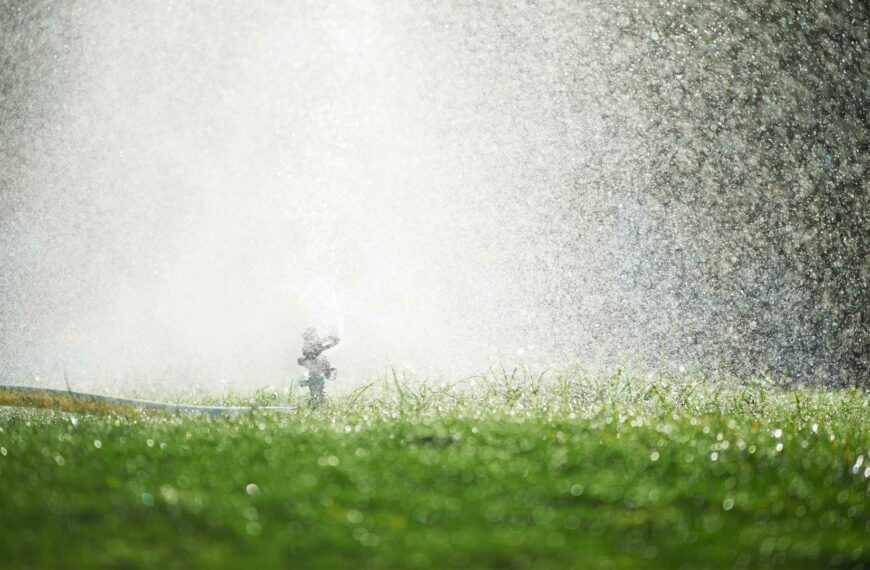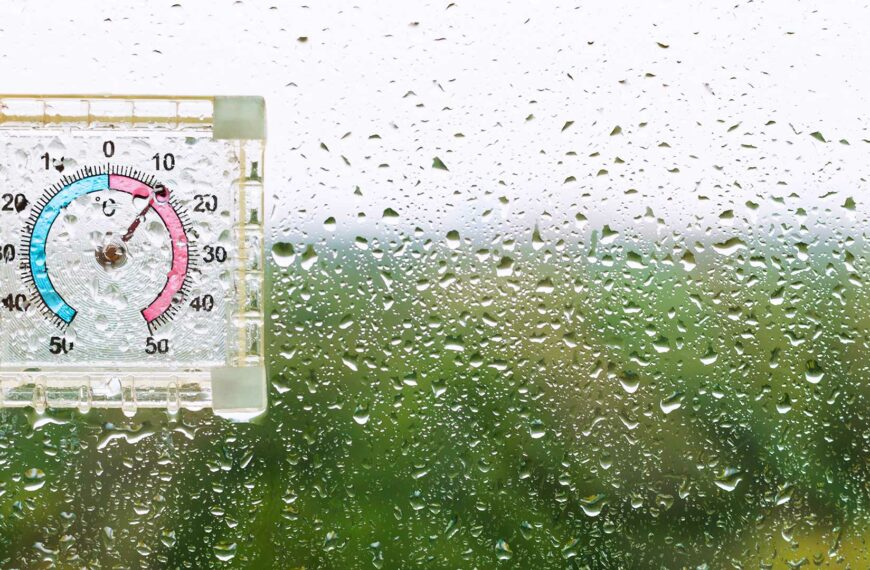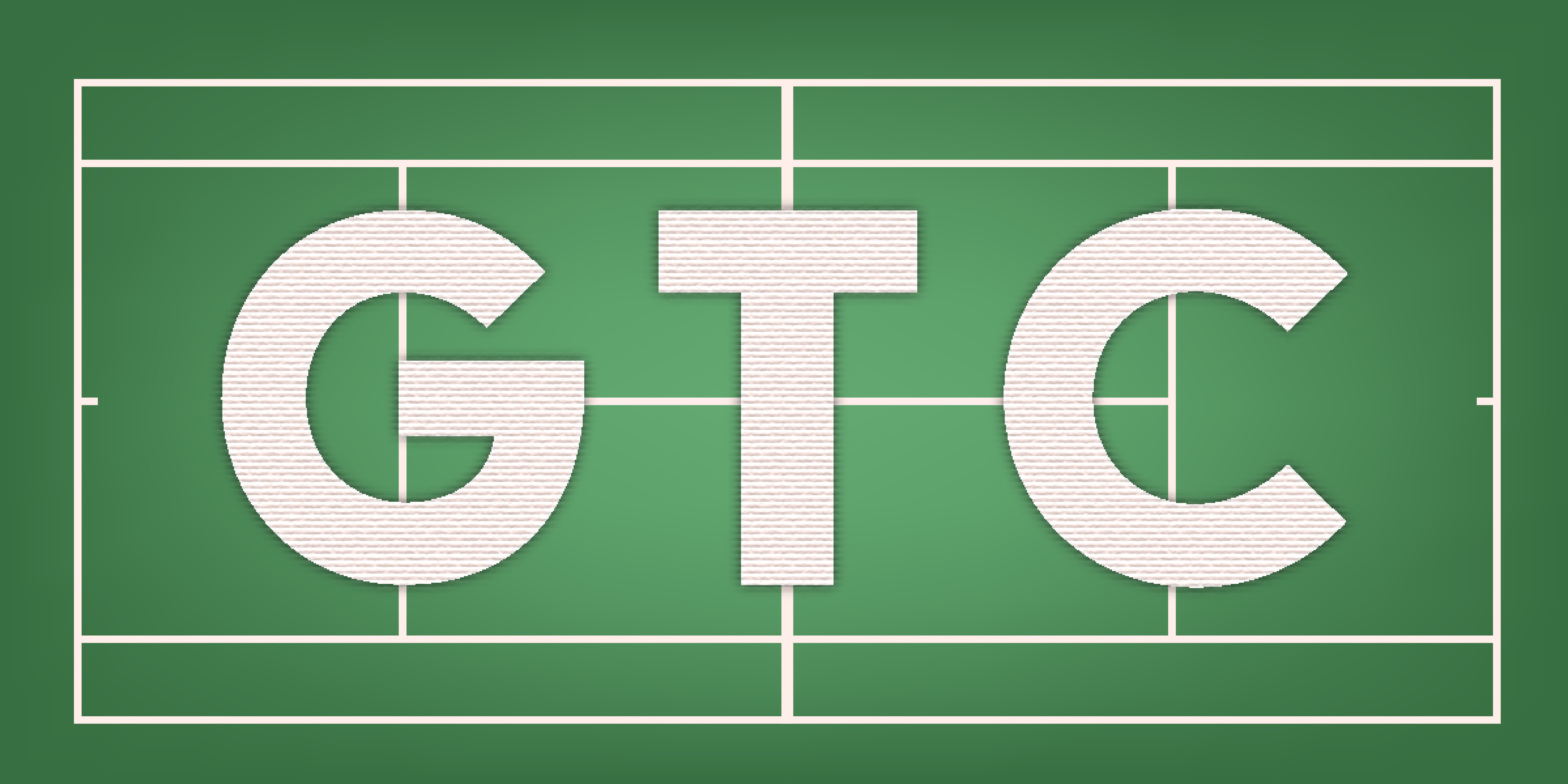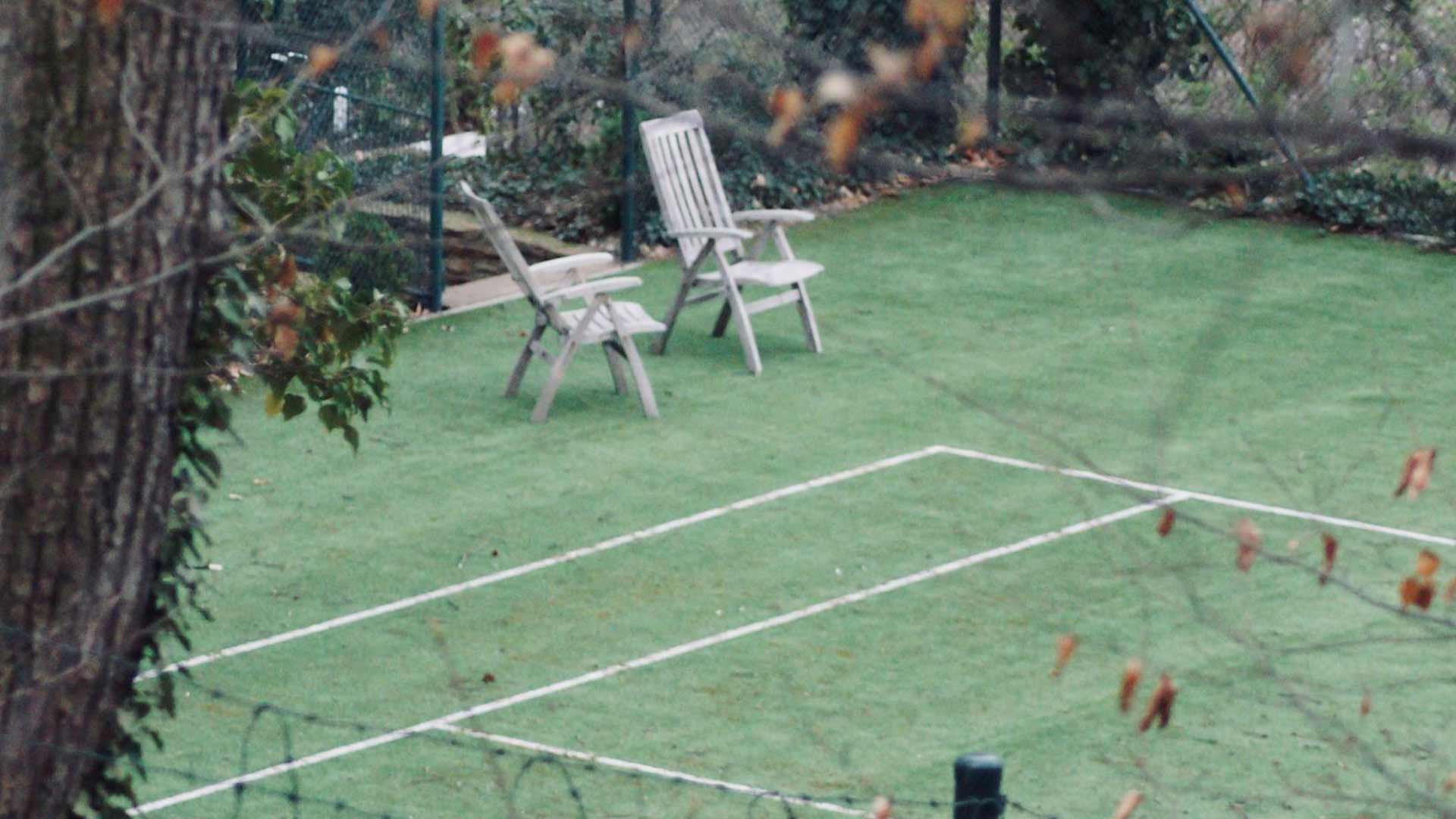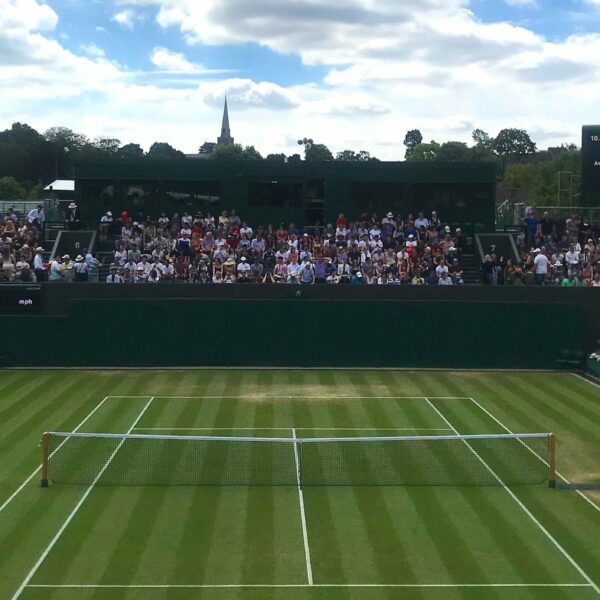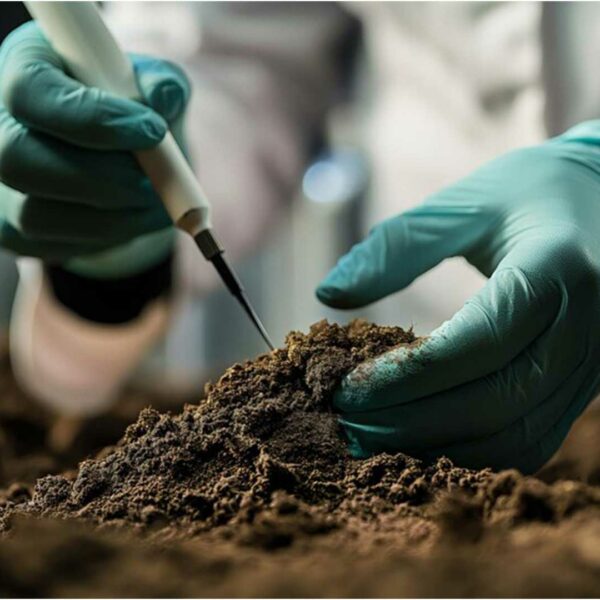Top Irrigation Systems for Grass Courts: Enhancing Your Court’s Health
Introduction to Irrigation Importance
Irrigation plays a pivotal role in maintaining the health and functionality of grass courts, serving as the backbone for their optimal performance and longevity. Without adequate watering, grass courts can face several challenges, including drought stress, weed invasions, and increased susceptibility to diseases and pests. These issues can lead to uneven surfaces, poor playing conditions, and diminished aesthetic appeal, which are particularly problematic for sports like tennis and soccer, where surface integrity is paramount.
Proper irrigation ensures that grass remains consistently hydrated, fostering stronger growth and a lush, vibrant appearance. This not only enhances the visual appeal of the court but also improves player safety by maintaining a uniform height that reduces the risk of injuries from divots or uneven terrain. Additionally, well-watered grass grows thicker, providing better cushioning and a smoother playing surface.
Beyond immediate benefits, effective irrigation promotes soil health by maintaining optimal moisture levels, which are crucial for root development and nutrient absorption. Deeper roots enable the grass to withstand droughts and other environmental stresses more effectively. Furthermore, sustainable irrigation practices, such as drip systems or rainwater harvesting, contribute to water conservation, aligning with eco-friendly initiatives.
In summary, irrigation is crucial for maintaining the health and usability of grass courts, providing benefits that range from improved playability and safety to environmental stewardship.
Benefits of Proper Irrigation
Proper irrigation is a cornerstone of maintaining healthy grass courts, offering numerous benefits that extend beyond mere watering. It enhances playability, ensures player safety, and contributes to the overall longevity and aesthetics of the court. Here’s a detailed exploration of these advantages:
Enhanced Playability and Safety
Consistent irrigation ensures the grass remains at an optimal height, providing a smooth and level playing surface. This reduces the risk of players slipping or tripping, especially crucial for sports like tennis and soccer where surface integrity is vital. Proper watering also minimises divots, which can alter ball trajectory and affect gameplay.
Uniform Growth and Aesthetic Appeal
Regular irrigation fosters uniform grass growth, avoiding patchy areas that detract from the court’s professional appearance. This uniformity also simplifies maintenance, as mowing becomes more efficient. Additionally, taller grass absorbs more sunlight, creating a cooler playing environment, which is particularly beneficial during intense matches.
Soil Health and Root Development
Adequate moisture in the soil supports deep root growth, enhancing the grass’s ability to withstand droughts and environmental stressors. These robust roots enable the grass to thrive in challenging conditions, resulting in healthier turf that requires fewer inputs and promotes sustainability.
Drought Resistance and Stress Tolerance
Properly irrigated grass courts are more resilient to prolonged periods of dryness. This stress tolerance ensures the court remains lush and functional, reducing the risk of weed invasions and maintaining its aesthetic appeal despite adverse weather conditions.
Water Conservation and Sustainability
Efficient irrigation systems, such as drip systems, deliver water precisely to the roots, minimising waste. These methods align with eco-friendly initiatives, supporting sustainable land management practices that conserve water resources.
Extended Turf Life and Cost Savings
Healthy grass grows rapidly and recovers from damage effectively, extending the lifespan of the court. This reduces the frequency of costly replacements and lowers maintenance expenses, making it a cost-effective solution for long-term court management.
Improved Surface Durability
Strong, healthy grass provides a sturdy foundation that resists wear from foot traffic and machinery. This durability ensures the court remains intact, preventing cracks or uneven surfaces that could arise from excessive use.
Injury Prevention and Player Performance
Proper irrigation maintains grass height, reducing the risk of injuries caused by divots or uneven terrain. Additionally, the consistent playing surface enhances ball control and movement, benefiting player performance and overall game quality.
By integrating effective irrigation practices, you support a holistic approach to court maintenance, complementing efforts in fertilisation and pest control. This ensures a resilient, healthy grass court that thrives under various conditions, providing a safe and enjoyable environment for both players and spectators.
Types of Irrigation Systems for Grass Courts
Maintaining a healthy and thriving grass court involves selecting the right irrigation system that strikes a balance between efficiency, effectiveness, and sustainability. Different irrigation systems cater to various needs, ensuring proper hydration of the grass while conserving water and resources. Below are the primary types of irrigation systems suitable for grass courts, each offering unique benefits tailored to their specific requirements.
Surface Irrigation: Sprinkler Systems
These are the most common and straightforward irrigation methods. They involve installing sprinklers above the ground, which distribute water uniformly across the court. They are ideal for large areas and offer a simple yet effective solution for consistent watering.
Drip Irrigation
A specialised form of surface irrigation, drip systems deliver water directly to the base of plants via emitters. This method is highly efficient, as it targets specific areas, reducing water wastage and ensuring precise hydration. Drip irrigation is a favourite among professionals due to its precision and water-saving capabilities. By emitting water directly at the roots, it ensures minimal evaporation and maximises nutrient absorption. This system is particularly effective for maintaining the health of grass courts, as it allows for controlled watering without overhydration
Micro-Irrigation
Micro-irrigation takes drip irrigation a step further, utilising tiny emitters that release water directly at the plant’s roots. This method offers even greater precision, making it excellent for delicate turf grasses and ensuring that every part of the court receives adequate moisture without excess runoff.
Rainwater Harvesting
Rainwater harvesting systems collect and store rainwater for later use, significantly reducing reliance on municipal water supplies. This eco-friendly method is ideal for regions with water scarcity, offering a sustainable approach to maintaining court health without depleting natural resources.
Soil Moisture Sensors
These advanced systems monitor soil moisture levels and automatically adjust irrigation based on real-time data. They prevent overwatering, ensuring optimal hydration levels for grass courts while conserving water.
Pressure-Demand Systems
Pressure-demand irrigation regulates water pressure according to the specific needs of the system, ensuring that no water is wasted unnecessarily. This feature is particularly useful for controlling water flow during off-peak times or low-demand scenarios.
Each of these irrigation systems plays a crucial role in maintaining the health and beauty of grass courts. Whether you opt for a simple sprinkler system or an advanced drip irrigation setup, choosing the right system ensures your court remains lush, playable, and resilient against environmental stresses.
Efficient Water Conservation Practices
Efficient Water Conservation Practices for Grass Courts
Maintaining a healthy grass court while conserving water is essential for sustainability and cost-effectiveness. Here are key practices to optimise water usage:
Regular Leak Detection
Conduct routine inspections of irrigation systems to identify and repair leaks. Monthly checks or post-storm inspections can prevent unnecessary water waste.
Adjust Irrigation Schedules
Tailor watering to the court’s specific needs. Water during early mornings or late evenings to minimise evaporation and avoid peak demand periods.
Avoid Overwatering
Monitor grass health to ensure adequate watering without overwatering. Overwatering can lead to waterlogging and the development of diseases.
Select Efficient Irrigation Systems
Opt for systems like drip irrigation, which deliver water precisely and reduce evaporation and waste.
Implement Soil Moisture Sensors
Use sensors to monitor soil moisture levels, allowing automatic adjustments to prevent overwatering and conserve water.
Maintain System Efficiency
Regularly clean emitters and check for blockages to ensure optimal performance and water efficiency.
Reuse Water Resources
Capture rainwater or utilise greywater for irrigation, reducing dependence on potable water sources.
Choose Drought-Tolerant Grass
Select grass varieties suited for local conditions to reduce watering frequency.
Optimise Court Layout
Design the court to minimise shaded areas, reducing the need for constant watering.
Educate and Train Staff
Provide training to groundskeepers on efficient practices to ensure optimal system utilisation.
By adopting these strategies, you can maintain a healthy grass court while promoting water conservation and environmental stewardship.
Maintenance Tips for Irrigation Systems
Maintaining an effective irrigation system is crucial for ensuring optimal water distribution and the health of your grass court. Regular care and attention can extend the life of your system and improve efficiency. Below are essential maintenance tips tailored for irrigation systems used in grass courts:
Regular Inspections
Schedule frequent inspections of your irrigation system to detect any issues such as clogs, blockages, or damaged emitters. This helps prevent water wastage and ensures even distribution.
Clean Emitters
Periodically remove debris and dirt from emitters to maintain proper water flow. Clean emitters prevent clogging and ensure that water is distributed efficiently.
Adjust Pressure Levels
Ensure that your irrigation system operates at the correct pressure level. High pressure can damage emitters and lead to overwatering, while low pressure may result in inadequate coverage. Adjust as needed to maintain optimal performance.
Replace Worn Parts
Regularly inspect and replace any worn-out or damaged components, such as emitters, hoses, or valves. This prevents leaks and ensures reliable operation.
Schedule Preventive Maintenance
Establish a routine for checking and servicing your irrigation system, such as quarterly inspections or seasonal maintenance. This proactive approach helps catch potential issues before they escalate.
Document System Condition
Keep detailed records of your irrigation system’s components and their condition. This documentation facilitates planning for future maintenance and ensures that all components are functioning optimally.
Integrate Smart Technology
Consider upgrading your irrigation system with smart technology, such as automatic shut-off valves or remote monitoring systems. These features enhance efficiency and simplify maintenance tasks.
By following these maintenance tips, you can ensure that your irrigation system runs smoothly, delivering precise and efficient water distribution for your grass court. Regular upkeep not only extends the lifespan of your system but also contributes to overall water conservation efforts.
Healthier Grass Courts Through Irrigation
Maintaining a healthy grass court is essential for sports performance and aesthetic appeal. Effective irrigation plays a pivotal role in achieving this goal, ensuring that the grass remains lush, resilient, and free from common issues such as waterlogging, nutrient deficiencies, and disease. By understanding the importance of proper irrigation, you can create an environment that fosters thriving grass, ultimately enhancing the functionality and visual appeal of your court.
The Importance of Irrigation for Grass Courts
Irrigation is vital for grass courts due to several factors:
Water Distribution
Proper irrigation ensures that water is evenly distributed across the entire surface, preventing areas from becoming overly dry or waterlogged. This balance is crucial for maintaining a healthy root system and promoting uniform growth.
Nutrient Delivery
A well-designed irrigation system delivers essential nutrients and minerals directly to the grass roots, ensuring that the turf receives adequate nourishment for optimal health.
Stress Reduction
Consistent watering helps mitigate environmental stresses caused by heat, drought, or excessive foot traffic, which can otherwise weaken the grass.
Prevention of Diseases
Adequate irrigation can help prevent fungal diseases and other grass court ailments by maintaining suitable moisture levels and ensuring that the grass is not subjected to constant stress.
Benefits of Proper Irrigation
The advantages of effective irrigation extend beyond just the grass; they contribute to a sustainable and functional court surface.
Reduces Waterlogging
Proper irrigation prevents water from pooling on the surface, which can lead to root rot and an unhealthy playing surface.
Promotes Uniform Growth
Even watering ensures that grass grows uniformly, reducing the risk of bare patches or uneven surfaces.
Supports Nutrient Cycling
Irrigation helps deliver organic matter and nutrients, fostering a healthier soil ecosystem and promoting microbial activity.
Reduces Chemical Use
Well-maintained grass often requires fewer chemicals, as it is stronger and less susceptible to pests and diseases.
Achieving Healthy Grass Courts Through Irrigation
To maximise the benefits of irrigation, consider the following strategies:
Tailor Irrigation to Grass Type
Different grasses have varying water needs. Research the specific requirements of your grass variety to optimize watering schedules.
Use Efficient Watering Methods
Techniques like drip irrigation or rainwater harvesting can significantly reduce water usage while ensuring consistent hydration.
Monitor Soil Moisture Levels
Using tools like soil moisture sensors can help determine when and how much to water, preventing overhydration or dehydration.
Consider Seasonal Adjustments
Adjust irrigation patterns according to weather conditions and seasonal changes to meet the grass’s evolving needs.
By implementing these practices, you can create a healthier grass court that withstands wear and tear, thrives in various conditions, and provides a superior playing experience. Effective irrigation is not just about watering; it’s about creating an environment where grass can flourish, contributing to the longevity and vitality of your court.
Case Studies of Successful Grass Court Irrigation Systems
Drip Irrigation Success at a Tennis Facility
Problem: A tennis club experienced water wastage and inconsistent grass health due to its conventional sprinkler system.
Solution: They installed a drip irrigation system tailored for specific grass types, allowing targeted watering.
Outcome: Reduced water usage by 30%, healthier grass with fewer maintenance issues, and a 25% reduction in chemical use.
Rainwater Harvesting at a Sports Park
Problem: Water scarcity and high costs for a public sports park.
Solution: Implemented rainwater harvesting and storage systems alongside efficient irrigation.
Outcome: Reduced water bills by 40%, enhanced grass quality, and a sustainable model for other parks.
Smart Irrigation Technology at a Private Club
Problem: Inconsistent watering leading to patchy grass and higher maintenance costs.
Solution: Integrated smart sensors and automated systems for real-time moisture monitoring.
Outcome: Optimised watering schedules, 20% reduction in maintenance costs, and a 15% increase in grass density.
Micro-Irrigation and Fertigation Integration
Problem: Nutrient deficiencies are causing poor grass health.
Solution: Combined micro-irrigation with fertigation for controlled nutrient delivery.
Outcome: Enhanced grass health, reduced pest issues, and a 35% decrease in fertiliser waste.
Each case study exemplifies how tailored irrigation solutions can transform grass court maintenance, emphasising efficiency, effectiveness, and sustainability. These successes demonstrate the adaptability of irrigation systems and their potential to enhance both environmental and operational performance.
Sustainability and Environmental Impact
Sustainability and Environmental Impact of Irrigation Systems for Grass Courts
Sustainable irrigation practices are essential for preserving the environment while maintaining the health of grass courts. Efficient irrigation systems not only conserve water but also minimise chemical use, protect natural resources, and promote biodiversity. Here’s an exploration of the environmental benefits:
Water Conservation
Modern irrigation methods, such as drip systems and rainwater harvesting, significantly reduce water waste. Drip irrigation targets specific areas, minimising evaporation and runoff, whereas rainwater harvesting repurposes naturally collected precipitation, decreasing reliance on municipal water supplies.
Reduced Chemical Use
Conventional systems often require excessive chemicals for maintenance, which can contaminate water sources. Sustainable practices, such as fertigation, deliver nutrients precisely, preventing overuse and runoff into waterways, thus protecting aquatic ecosystems.
Preservation of Natural Resources
By optimising water usage, sustainable irrigation supports water security during droughts and adapts to changing climatic conditions, ensuring the longevity of grass courts regardless of environmental challenges.
Support for Biodiversity
Healthier grass courts encourage local wildlife and contribute to maintaining a balanced ecosystem, fostering a harmonious relationship between human activities and nature.
Resilience to Climate Change
These systems enhance resilience, ensuring that courts remain functional and aesthetically pleasing under stressors such as droughts, thereby supporting long-term environmental health.
In summary, sustainable irrigation systems offer a dual benefit: they enhance the functionality and appearance of grass courts while promoting environmental stewardship, aligning with global efforts to conserve water and preserve the ecosystem.
Fertilisation and Pest Control Considerations
Maintaining the health and aesthetics of grass courts requires careful consideration of fertilisation and pest control practices. Effective fertilisation ensures that the grass receives the necessary nutrients to thrive, while pest control prevents damage from weeds, insects, and diseases. When integrated with efficient irrigation systems, these practices contribute to the overall sustainability and longevity of your grass courts.
Fertilization Strategies
Fertilisation is a cornerstone of successful grass court maintenance. Regular fertilisation provides essential nutrients, including nitrogen, phosphorus, and potassium, which are vital for grass growth. The frequency and type of fertiliser depend on factors such as the grass species, soil condition, and seasonal changes.
Nutrient Requirements
Different grasses have varying nutritional needs. For example, cool-season grasses may require more phosphorus and potassium, while warm-season grasses benefit from higher nitrogen levels.
Application Timing
Fertilise at appropriate intervals, typically every 4-6 weeks during the growing season. Avoid over-fertilising to prevent nutrient burn, which can harm the grass.
Fertiliser Types
Choose between slow-release, quick-release, or organic fertilisers. Slow-release formulas provide a steady supply of nutrients over time, reducing the need for frequent applications. Organic options, such as compost or manure, also enrich the soil and enhance microbial activity.
Proper fertilisation ensures that your grass courts stay lush and resilient, contributing to a longer lifespan and better performance for sports or recreational activities.
Pest Control Considerations
Pest control is equally important for maintaining the health and integrity of your grass courts. Common pests include weeds, insects, and diseases, each requiring distinct management strategies.
Weed Management
Identify and remove weeds promptly to prevent them from competing for nutrients and space. Herbicides can be effective, but always follow application guidelines to avoid harming beneficial plants or pollinators. Manual removal, especially for invasive species, can also be a practical solution.
Insect Control
Insects such as chinchilla beetles, armyworms, and white grubs can damage the roots of grass and negatively impact turf quality. Use targeted insecticides, preferably those labelled for golf courses or sports fields, to minimise harm to beneficial insects and reduce environmental impact.
Disease Prevention
Diseases like brown patch, powdery mildew, and dollar spot can weaken the grass. Fungicide treatments applied regularly, combined with good drainage and airflow, help reduce disease risks.
Integrated Pest Management (IPM)
Adopt an IPM approach by monitoring pest populations, using pesticides judiciously, and implementing cultural practices such as proper mowing, dethatching, and watering to minimise stress on the grass.
By addressing pest-related issues early and systematically, you can maintain a healthier, more vibrant lawn that withstands environmental challenges and thrives under heavy use. Fertilisation and pest control are critical components of maintaining healthy grass courts. Strategic use of fertilisers ensures nutrient availability, while effective pest management safeguards against damage and disease. When integrated with efficient irrigation systems, these practices create a balanced, sustainable environment that promotes long-term court performance and aesthetic appeal. Regular monitoring and adjustments based on weather patterns and specific needs will further optimise your efforts, ensuring your grass courts remain a source of pride for your property.
Conclusion
When it comes to maintaining healthy grass courts, proper irrigation is paramount. By selecting the right irrigation systems, adopting efficient water conservation practices, and prioritising regular maintenance, you can ensure your court thrives year-round. From drip irrigation systems to rotary sprinklers, each option offers unique benefits tailored to specific needs. Efficient water use not only preserves resources but also supports sustainable practices, aligning with modern agricultural trends. Regular inspections and timely repairs further enhance system performance, preventing costly damage and ensuring optimal grass health. Additionally, integrating fertilisation and pest control strategies with irrigation practices can maximise nutrient absorption and minimise turf stress. In conclusion, investing in and properly maintaining effective irrigation systems leads to healthier grass courts, delivering long-term benefits for both playability and aesthetics. Embracing sustainable practices ensures a greener, more resilient court while contributing positively to environmental stewardship.

